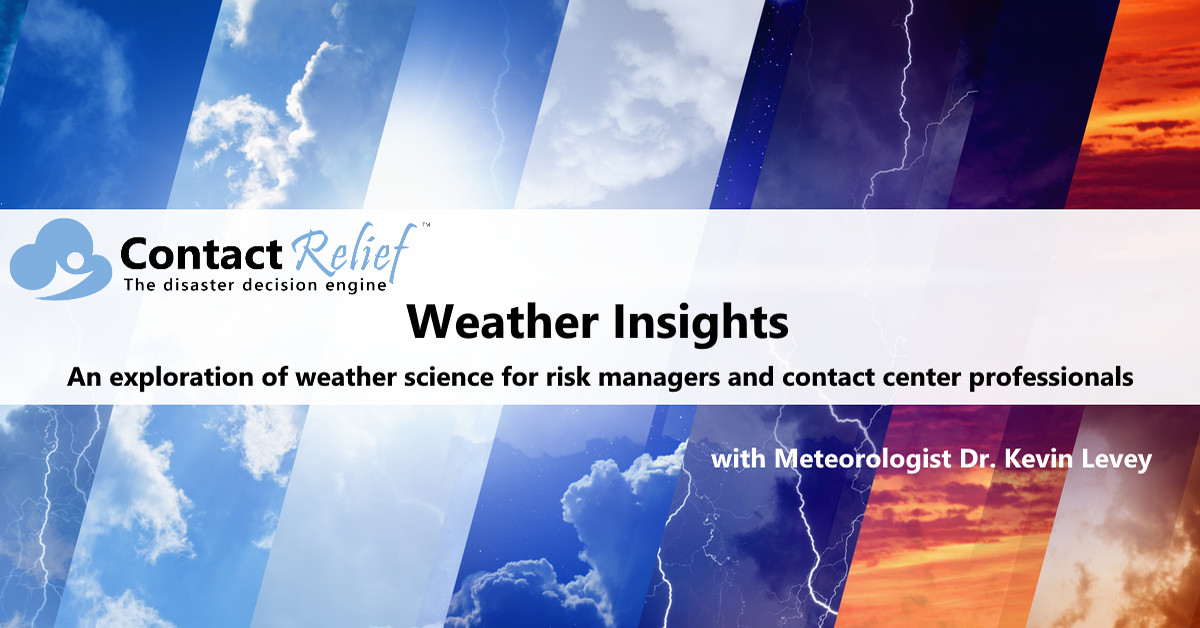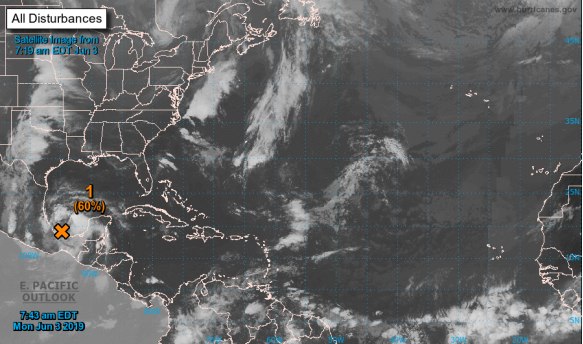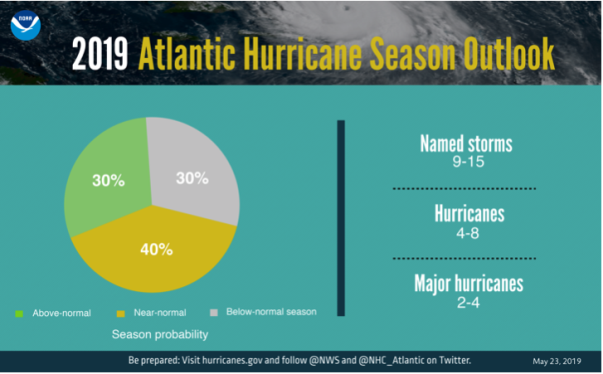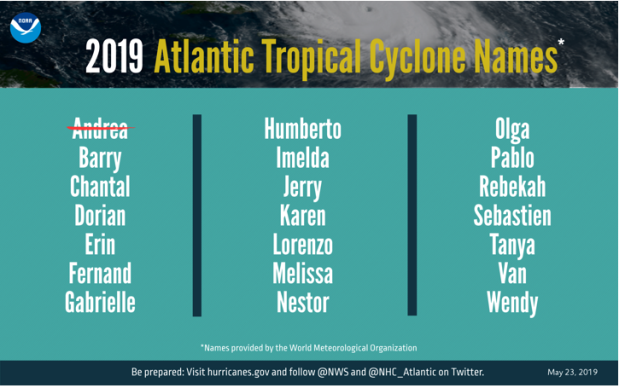
Atlantic Hurricane Season 2019 Has Started!
ContactRelief meteorologist Dr. Kevin Levey reviews the 2019 hurricane forecasts.
Monday, 03 June 2019 14:45:00 -05:00
Atlantic Hurricane Season 2019 has started!
The Atlantic Hurricane season officially started this past Saturday and runs through 30th November. As is typical for the earliest few weeks of the hurricane season, all is quiet along the Gulf Coast this morning as well as throughout the Atlantic Ocean. There is, however, a disturbance in the Bay of Campeche that has a 60% chance of developing into a tropical cyclone. This system is expected to move slowly northwestward toward the northeastern coast of Mexico and could become a tropical cyclone before it moves inland in a day or two. Regardless of development, the disturbance will likely produce heavy rainfall over portions of southern and eastern Mexico during the next few days. Regardless of development, the disturbance will likely produce heavy rainfall over portions of southern and eastern Mexico during the next few days (seeFigure 1 below.)

I know I mentioned last week that I would conclude our severe weather season series talking about hail and lightning, but since the Atlantic Hurricane Season has officially started, I thought I’d hold that off until next week and discuss what the National Hurricane Center foresees this season!
NOAA’s Climate Prediction Center is predicting that a near-normal Atlantic hurricane season is most likely this year. This outlook forecasts a 40% chance of a near-normal season, a 30% chance of an above-normal season and a 30% chance of a below-normal season. The hurricane season officially extends from June 1 to November 30. For 2019, NOAA predicts a likely range of 9 to 15 named storms (winds of 39 mph or higher), of which 4 to 8 could become hurricanes (winds of 74 mph or higher), including 2 to 4 major hurricanes (category 3, 4 or 5; with winds of 111 mph or higher). NOAA provides these ranges with a 70% confidence. An average hurricane season produces 12 named storms, of which 6 become hurricanes, including 3 major hurricanes (see Figure 2 below).

According to NOAA “With the 2019 hurricane season upon us, NOAA is leveraging cutting-edge tools to help secure Americans against the threat posed by hurricanes and tropical cyclones across both the Atlantic and Pacific,” said Secretary of Commerce Wilbur Ross. “Throughout hurricane season, dedicated NOAA staff will remain on alert for any danger to American lives and communities.”
Figure 3 below shows the names that will be given to Atlantic names storms.

This outlook reflects competing climate factors. The ongoing El Niño is expected to persist and suppress the intensity of the hurricane season. Countering El Niño is the expected combination of warmer-than-average sea-surface temperatures in the tropical Atlantic Ocean and Caribbean Sea, and an enhanced west African monsoon, both of which favor increased hurricane activity.
The 2019 hurricane season marks the first time NOAA’s fleet of Earth-observing satellites includes three operational next-generation satellites. Unique and valuable data from these satellites feed the hurricane forecast models used by forecasters to help users make critical decisions days in advance
NOAA’s National Weather Service is making a planned upgrade to its Global Forecast System (GFS) flagship weather model – often called the American model – early in the 2019 hurricane season. This marks the first major upgrade to the dynamical core of the model in almost 40 years and will improve tropical cyclone track and intensity forecasts.
NOAA’s National Hurricane Center and NWS office in San Juan will expand the coastal storm surge watches and warnings in 2019 to include Puerto Rico and the U.S. Virgin Islands. In addition, NHC will display excessive rainfall outlooks on its website, providing greater visibility of one of the most dangerous inland threats from hurricanes.
Also, this season, NOAA’s Hurricane Hunter aircraft will collect higher-resolution data from upgraded onboard radar systems. These enhanced observations will be transmitted in near-real time to hurricane specialists at the National Hurricane Center, the Central Pacific Hurricane Center and forecasters at NWS Weather Forecast Offices.
In addition to the Atlantic hurricane season outlook, NOAA also issued seasonal hurricane outlooks for the eastern and central Pacific basins. A 70% chance of an above-normal season is predicted for both the eastern and central Pacific regions. The eastern Pacific outlook calls for a 70% probability of 15 to 22 named storms, of which 8 to 13 are expected to become hurricanes, including 4 to 8 major hurricanes. The central Pacific outlook calls for a 70% probability of 5 to 8 tropical cyclones, which includes tropical depressions, tropical storms, and hurricanes.
NOAA’s outlook is for overall seasonal activity and is not a landfall forecast. Hurricane preparedness is critically important for the 2019 hurricane season, just as it is every year. Visit the National Hurricane Center’s website at hurricanes.gov throughout the season to stay current on any watches and warnings.
NOAA’s Climate Prediction Center will update the 2019 Atlantic seasonal outlook in August just prior to the historical peak of the season.
We’ve run out of time this week, but I will discuss lightning and hail next week (if there are no unforeseen weather events like hurricanes etc., etc., etc.)
